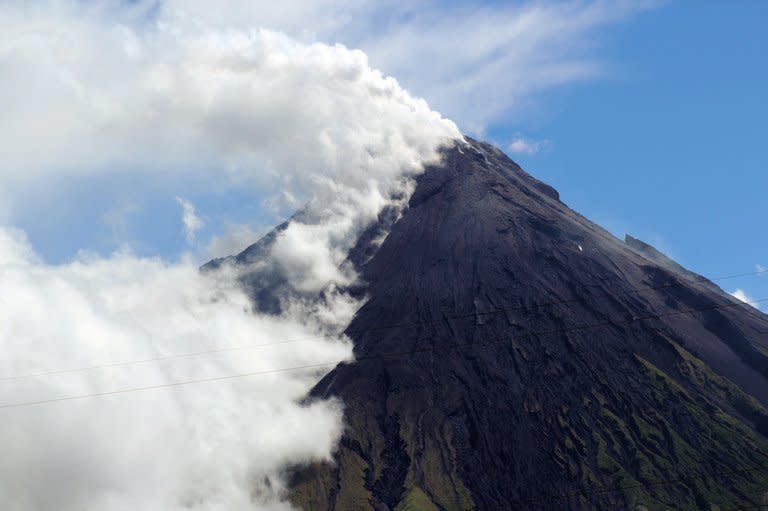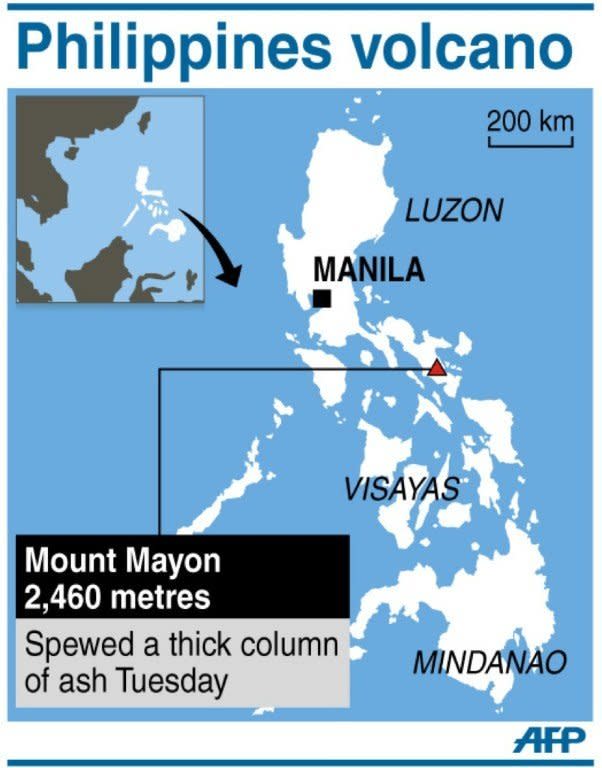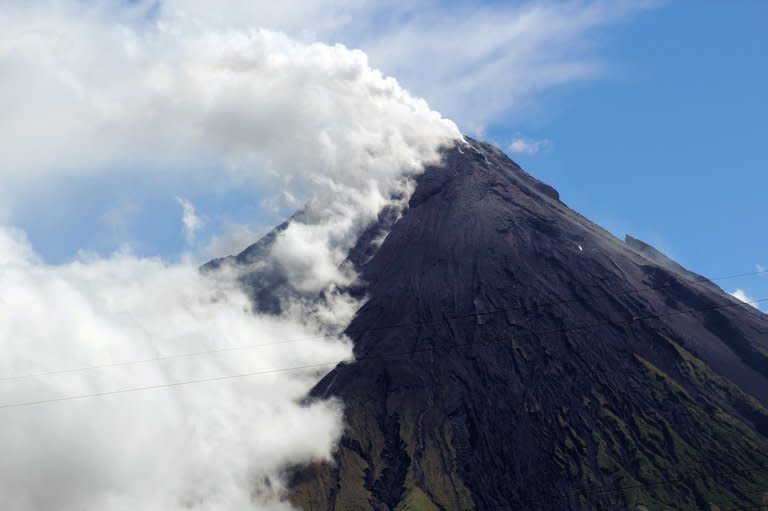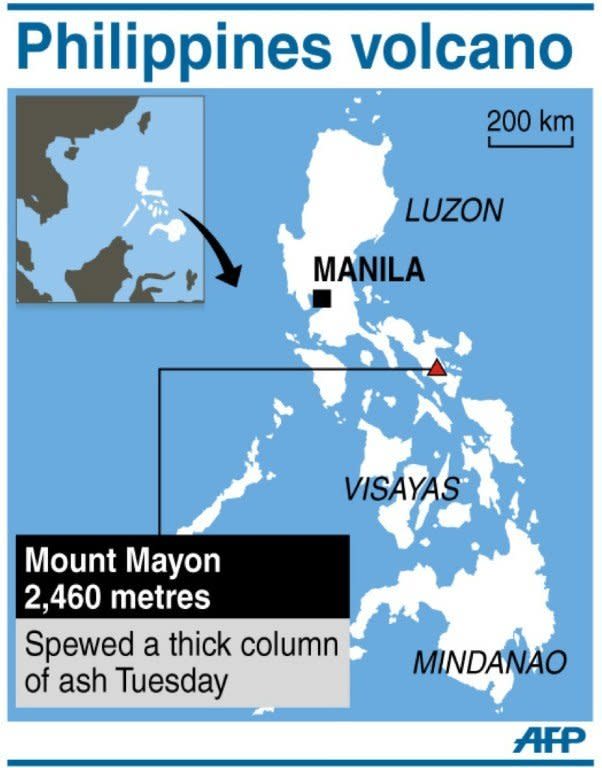Five dead as Philippine volcano erupts
Four foreign tourists and their Filipino tour guide were crushed to death when one of the Philippines' most active volcanoes spewed a giant ash cloud and a hail of rocks on Tuesday, authorities said. Twenty-seven people, including at least nine foreigners, were climbing picturesque Mount Mayon when it erupted without warning, and bad weather meant some of them would have to spend the night on its slopes, officials said. "It rained like hell with stones," local tour operator Marti Calleja quoted an Austrian woman who was among those injured in the ordeal as saying. "The rocks that came crashing down on them were as big as dining (table) sets," he told AFP by phone. Calleja said five foreigners and three of his Filipino guides had begun hiking up Mayon just a few hours before the eruption, which sent a thick column of ash 500 metres (1,600 feet) into the air. A statement from the provincial government later said two German men and one German woman and a Spanish woman living in Germany were killed, along with a Filipino guide. An Austrian woman, two Thais and three Filipinos were reported to have been rescued and taken to hospitals for treatment of bruises and suspected fractures. Provincial governor Joey Salceda told AFP that while the volcano had calmed down, rescue helicopters were having trouble landing to pick up the rest of the injured due to heavy rain. He said rescuers were forced to start climbing the mountain to reach all the injured, and it was unclear when they would be brought down. Calleja said the foreigners paid about $100 each for an overnight adventure on the 2,460-metre (8,070-foot) Mayon, which is famed for its near-perfect cone but has a long history of deadly eruptions. A six-kilometre (3.75 mile) radius "permanent danger zone" is supposed to be enforced around the volcano. But Calleja said the local government allowed people to climb when there were no signs of an eruption. "Between 300 and 1,000 climbers go here during the peak season from May to August," Calleja said. Salceda confirmed the arrangement, but said tourists hiking up should still inform the authorities beforehand. "Mayon is just like any other mountain and mountaineers assume the same risk as anywhere. But while we allow them to go, they should notify us and seek our approval. In this case, they did not," he said. Volcanologists described the eruption as a 73-second "steam-driven minor explosion" that was not expected to be repeated anytime soon. Chief state seismologist Renato Solidum said people living around Mayon did not need to evacuate. He said the explosion was triggered when rainwater made contact with hot ash deposits on the crater mouth. Residents in towns around the volcano said they were taken by surprise. "It was so sudden that many of us panicked," Jun Marana, a 46-year-old bus driver and father of two, told AFP by telephone. "When we stepped out we saw this huge column against the blue sky." Mayon, about 330 kilometres (200 miles) southeast of Manila, has erupted dozens of times in recorded history. In 1814, more than 1,200 people were killed when lava flows buried the town of Cagsawa. In December 2009 tens of thousands of villagers were displaced when Mayon spewed ash and lava. The volcano also erupted in August 2006. There were no direct deaths caused by the explosion, but the following December a passing typhoon unleashed an avalanche of volcanic mud from its slopes that killed 1,000 people.





